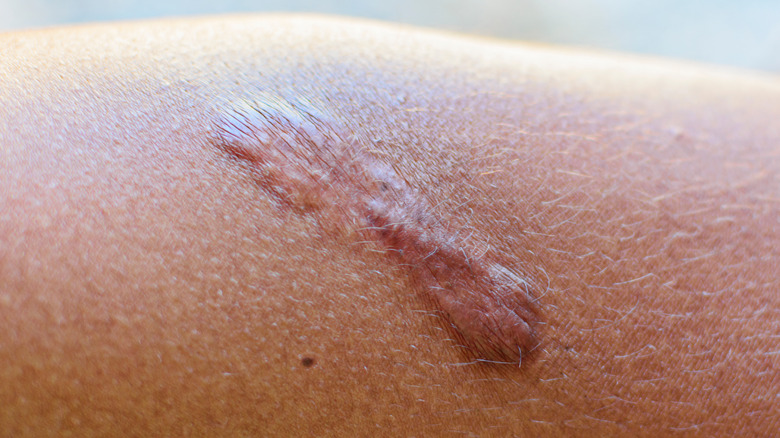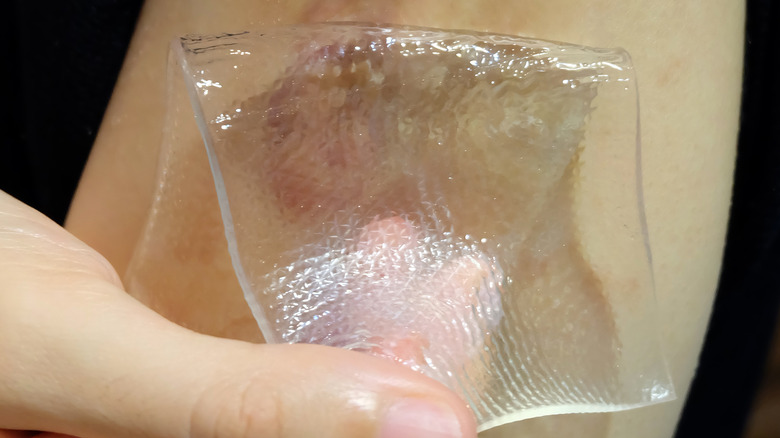What Is A Hypertrophic Scar?
After an injury, you'll probably notice that your body heals the wounds over time and it's likely that a scar may form. According to the Cleveland Clinic, small cuts or wounds that occur on the upper layers of skin tend to heal smoothly and may disappear completely as new skin grows over the injured area. However, it's also possible that wounds may not heal evenly and a scar may appear raised instead of the new skin growing in a manner that is flush with the surface area. In this case, a hypertrophic scar may develop.
Hypertrophic scars are scars that grow in response to injuries and usually appear raised instead of growing flush with the existing skin (via Healthline). It's common for hypertrophic scars to be wide in appearance and thick in texture. Hypertrophic scars occur when the body produces an excessive amount of collagen during the healing process, resulting in the growth of thickened, raised skin. These scars typically develop in response to deeper wounds and injuries that become inflamed or infected. Injuries that are left to heal without the application of stitches, or piercings that become infected, often result in hypertrophic scars. While these scars aren't normally cause for concern since they don't pose any risk to health, they can be itchy and bothersome because of how they develop. More frequently, hypertrophic scars can become a cosmetic concern and someone with a hypertrophic scar may want to have it treated because of the scar's raised, visible appearance.
Treatments for hypertrophic scars
When it comes to treating hypertrophic scars, there are treatment options that can be applied at home in addition to options available in a doctor's office (per Healthline). Treatments that you can apply at home include the use of silicone to heal the thickened tissue of the hypertrophic scar. Silicone products that work to eliminate scars range from gels, foams, and sprays, to silicone sheets that can be placed on a scar and left on for up to 24 hours at a time. Other over-the-counter treatments encompass the practice of applying pressure and massage to the area of thickened skin. Bio oil and onion extract gels or creams are other at-home treatment options that have been found to be effective in treating the appearance of hypertrophic scars.
If over-the-counter methods don't provide the desired results you want, there are additional avenues that a doctor can provide, reports MedicalNewsToday. Steroid injections, such as cortisone shots, can be utilized over a period of several weeks to help fade hypertrophic scars. Steroid injections mixed with liquid nitrogen comprise a treatment called cryotherapy, which can be another way of treating scars in a doctor's office. Laser treatments can also create improvements in the darkened coloring of hypertrophic scars, but may not be the best way to flatten the raised skin. When hypertrophic scars limit joint movement or grow in areas that cause pain, surgery to remove the hypertrophic scar may be recommended by your doctor.


